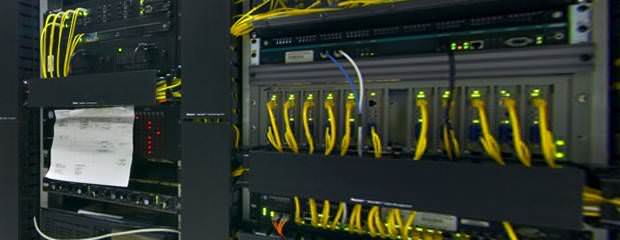
GL conveys the availability of VQuad⢠Probe
GL Communications Inc. a leader in providing PC-based test, analysis and simulation products and consulting services to the worldwide telecommunications industry, conveyed today the availability of its VQuad⢠Probe hardware.
He added, "The VQuad⢠Probe supports two independent devices for connecting to endpoints of a single network or two completely separate networks. It is configured for control via Ethernet using Remote Desktop.
The VQuad⢠Probe as well supports T1 E1 interfaces when used with GL's Portable USB T1 E1 Analyzer. Using the T1 E1 Analyzer, the VQuad⢠Probe can generate and receive up to 8 simultaneous CAS, PRI ISDN or No Call Control calls on T1 or E1 trunks."
·A single solution for up to 8 interfaces ·Each port may be controlled independently for traffic and call control ·Automatic send/receive voice files over already established calls ·Time/Digit/Tone triggering of send/receive voice files. ·Remote Access for starting/stopping the tests along with retrieving results. ·Results available in real-time or post-processing ·Automatic execution of the VQT algorithms. ·Automatic Round Trip Delay and One Way Delay Measurements ·Echo Measurements testing, supports both line and acoustic echo ·Automated Data Testing including TCP, UDP, VoIP (Voice over Internet Protocol), Route, HTTP, FTP, DNS and SMS statistics are available for Mobile devices as then as the Internet connection of the PC, LTE).
Founded in 1986, GL Communications Inc. is a leading supplier of test, monitoring, and analysis equipment for TDM, Wireless, IP and VoIP networks. Unlike conventional test equipment, GL's test platforms provide visualization, capture, storage, and convenient features like portability, remotability, and scripting.
GL's VoIP and IP products generate / analyze thousands of calls and traffic simultaneously with traffic types just as frames, packets, voice files, digits, video, tones, noise, and fax. Nearly all codecs are supported including G.711, G.729, AMR, EVRC-A, B, C, GSM, iSAC, and many more. Additional features include visual analysis, real-time listening, and recording. The product line as well includes Ethernet / IP Testing capability that simulates and checks frame transport and throughput parameters of Ethernet and IP networks, including delay, errors and other impairments.
GL's Voice Quality Testing product line complements all of GL's products. Using ITU-standard algorithms, GL's VQT provides a widely accepted solution for assessing voice quality in the telecom industry. Voice Quality Testing across multiple networks is available.
GL's Wireless Products perform protocol analysis and voice quality assessment on GSM, CDMA, UMTS, and LTE (Long Term Evolution, latest standard in the mobile network technology) networks. Connections can be made to any wireless phone with automated call control, GPS mapping and real-time signal measurements.
The broadest range of simulation
GL's Echo Canceller testing solutions provide the broadest range of simulation and analysis, including line and acoustic echo. GL's compliance testing per G.168. G.167 and P.340 across TDM, IP, VoIP and Wireless networks is widely accepted in the industry.
GL's wireless VQT solutions help assessing impairments to voice quality just as poor mobile phone quality, voice compression and decompression algorithms, delay, loss and gain in speech levels, noise, acoustic and landline echo, and other distortions are easily assessed and accurately measured.
Wide variety of communications facilities
GL's Handheld data testers can test a wide variety of communications facilities and equipment including T1, fractional T1, E1, fractional E1, T3 and E3 modems, multiplexers, CSU, DSUs, T1 CSUs, DTUs, NTUs and TIUs and more. The testers provide convenience, economy, and portability for nearly any interface, including RS232, RS-422, RS-530, X.21, T1, E1, T3, E3, and many others.
GL's Network Surveillance and Monitoring products include Probes for TDM, IP, VoIP, ATM, and Wireless networks. An open standards based approach provides a scalable, feature rich, real-time access to network characteristics. Centralized or distributed access, efficient transport and database loading allow compatibility with 3rd party and standards based monitoring systems.
- · Rackspace debuts OpenStack cloud servers
- · America's broadband adoption challenges
- · EPAM Systems Leverages the Cloud to Enhance Its Global Delivery Model With Nimbula Director
- · Telcom & Data intros emergency VOIP phones
- · Lorton Data Announces Partnership with Krengeltech Through A-Qua⢠Integration into DocuMailer
